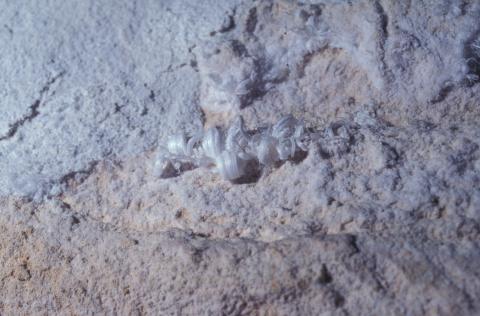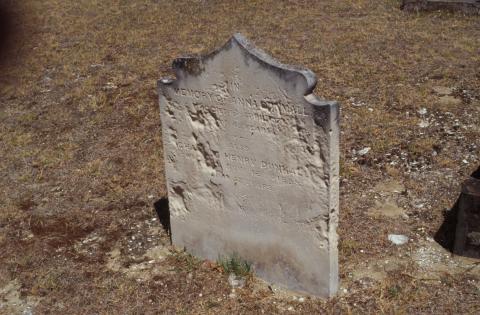Deterioration
Although stone artefacts may be damaged by factors as diverse as vandalism, floods, tourism pressures and even earthquakes these factors will not be examined in any detail in this chapter. Rather other significant agents of decay such as the following will be examined:
- weathering and eroding agents (sun, wind and rain);
- pollution;
- salt contamination; and
- biological activity.
Igneous stones such as granite are hard, non-porous and fairly stable. Even so, the surface of a granite monument will deteriorate when exposed to weathering agents and pollution. It may become obscured by soot or damaged by biological growth.
Sedimentary stones such as sandstones and limestones are relatively soft, porous and have friable surfaces. The matrix which cements the various particles together is readily damaged by weathering, pollution or salts. The surface of the stone is weakened and disintegration follows.
The characteristics and durability of metamorphic stones are variable. Marble for example, is of medium hardness, able to be polished and porous. It stains easily and deteriorates when exposed to conditions which promote weathering. Heat, pollutants and acidic conditions are damaging. Slate is a fine-grained, foliated rock that is susceptible to weathering and splitting into thin sheets (Figure 1).
While the chemical composition of stones may be similar, deterioration may vary depending on other factors such as the porosities of the stones and the size and distribution of their grains. Anything that causes a difference in the behaviour of the outer surface of stone structures compared to the inner regions can lead to stresses that eventually cause cracking and exfoliation of the outer surfaces.
Figure 1: Slate headstone showing exfoliation caused by exposure to the elements.
All porous or rough stone surfaces are dirtied by the deposition of airborne particles such as dust and smoke. Moisture condensing on a stone surface will increase the amount of deposition. In addition to disfiguring the stone, accumulated debris can contribute to chemical and biological attack.
Carbon dioxide and sulphur dioxide in the environment are incorporated in falling precipitation known as acid rain. Acid rain will dissolve the calcite in limestone, marble and sandstone. Acidified rainwater slowly dissolves the calcite in limestone monuments, leaving whitish patches. In areas protected from direct rain, the dirt accumulates as a black gypsum powder or crust. Studies have shown that the blackness of these crusts is largely due to anthropogenic sources, in particular the combustion of fossil fuels (Přikryl et al 2004). Diesel emissions are particularly disfiguring to stone structures.
Concern has also been expressed about the role that climate change may play in stone deterioration. In Scotland for example, higher temperatures and increased rainfall is expected to lead to increased biodeterioration of stone structures (Duthie et al 2008).
Salts may form in stone from airborne pollutants (sulphates and nitrates in particular) or be blown by wind from the sea onto stone structures. Porous stone in contact with the ground will also eventually suffer from salt damage. The base of the stone absorbs water and soluble salts which rise by capillary action. A cycle of wetting and drying is established with the pressure exerted by crystallising salts eventually disrupting the stone. Deterioration occurs in the area of stone which experiences fluctuating humidity, not where the stone is constantly wet. Visible damage includes pitting, spalling, crumbling and delaminating and is accompanied by salt efflorescence. The amount of salt in stone is correlated to the severity of the damage present in the stone. In addition to the damage caused by crystallisation, salts can also damage stone due to differential rates of thermal expansion between the incorporated salts and the stone crystals. Salts such as sodium chloride for example, have a much higher expansion rate than calcite crystals at the same temperature. Numerous examples of salt damage can be seen on sandstone, marble and slate gravestones and monuments (Figure 2).
Figure 2: Salt crystals forming on a limestone wall.
Moisture also contributes to the corrosion of metal components on stone monuments. Green, black or brown stains from corroding metal can disfigure stone and corroding iron dowels can cause fracturing.
Biological activity on stone is encouraged by a combination of factors including light, warm temperatures, high humidity levels and the presence of organic matter (from pollution or oils and waxes from previous conservation treatments). The type of organism likely to thrive on a stone substrate will be determined by the particular conditions associated with the site. Algae for example, need only light, a few inorganic compounds and a little water to develop. They may be found in relatively dry places. Once established algal growth is able to trap water and establish an environment conducive to the growth of other organisms such as bacteria, lichens, mosses and ferns. Damage to the stone is both chemical and physical. The growth process releases chemicals such as acids and chelating substances which attack the stone. Penetration of the stone surface by the organism exerts pressure which may lead to fracturing of the stone surface (Figure 3).
Figure 3: Limestone headstone showing erosion and discolouration from lichen.
Although damage to stone objects is not just an outdoors’ issue, moveable objects may be protected from extreme conditions and pollution by moving them indoors. Even then factors such as heat, humidity, acidity, salt and dust can continue to cause problems. Heat from spotlights and fireplaces for example, can cause irreversible damage to marble. The calcite crystals of marble have different directional coefficients of thermal expansion. Heating, even to 100°C, causes more expansion of the crystals in one direction than in the other. This distortion causes stresses and cracking on the marble surface, which may develop a white ‘sugary’ appearance.
Acidic vapours can build up in timber showcases or storage areas, especially at high temperatures and relative humidity and damage calcareous stones such as limestone and marble.
Careless handling can result in breakage, staining or scratching of softer stones.
Stone analyses are important so that deterioration mechanisms and rates can be determined. Analyses range from the simplest visual inspections and photographic documentation to more high powered techniques like 3-D laser scanning, fluorescence light detection and radar (LIDAR), ultrasonic scans, magnetic resonance imaging, thermography and even ground penetrating radar. While the former techniques (to LIDAR) are well suited to surface characterisations, the latter techniques are capable of providing information about the interiors of stones. For many situations however, the outer appearances provide enough information about stone deterioration to guide conservation treatments and the implementation of preventive conservation strategies.



